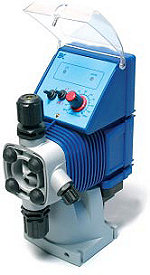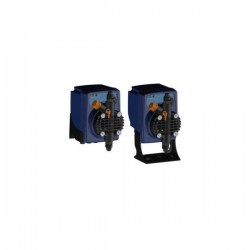No products

Water Chlorination is one of many methods that can be used to disinfect water. It is the process of adding various types of chlorine (Cl 2) or hypochlorite to waterfor the oxidation and disinfection of what will be the potable water source. Any type of chlorine that is added to water during the treatment process will result in the formation of hypochlorous acid (HOCl) and hypochlorite ions (OCl-), which are the main disinfecting compounds in chlorinated water.
Chlorine inactivates a microorganism by damaging its cell membrane. Once the cell membrane is weakened, the chlorine can enter the cell and disrupt cell respiration and DNA activity (two processes that are necessary for cell survival). The amount of chlorine that is required to disinfect water depends on the impurities in the water that needs to be treated. Many impurities in the water require a large amount of chlorine to react with all the impurities present.
Chlorination is the process of adding chlorine to water as a method of water purification (disinfection) to make it fit for human consumption. The water that has been treated with chlorine is effective in preventing the spread of disease.
Chlorination is mainly used on systems where the point of use is away from the source or storage tanks are being used. A chlorine-dosing pump will add a carefully measured amount of diluted chlorine to the system as the water passes into a tank. A wide variety of chemicals can be pumped (either gas chlorine, electrochemically generated chlorine, sodium hypochlorite or calcium hypochlorite). The amount of chlorine in the water needs to be monitored continuously to ensure the level stays within the recommended limits, too little and not all the contaminants will be destroyed, too much is bad for human health.
Chlorination method was first used over a century ago in Great Britain and then expanded to the United States in 1908 and Canada by 1917. Today, chlorination is the most popular method of disinfection and is used for water treatment all over the world.
The chlorination process is inexpensive, fairly easy to implement, when compared to other water treatment disinfection methods. It is effective against almost all bacteria and viruses as well as algae, fungi, some minerals and man-made chemicals pollutants. As with mains water a small amount of disinfectant is usually intentionally left in the water at the end of the treatment process ("residual chlorine") to reduce the risk of re-contamination in the distribution system. In addition, chlorine will also oxidize any iron, manganese and/or hydrogen sulphide that are present, so that they too can be removed in the sedimentation and filtration steps.
Hydragcom can supply and install chlorine dosing systems. Our chemical dosing pumps, in a unique design that allows for both foot- and wall-mounting, deliver accurate metering of chemicals, proven reliability, cost effective and easy installation.
Chlorination Dosing Pumps There is 1 product.
Call For Price
In StockChlorination Dosing Pump PKX
Call For Price

